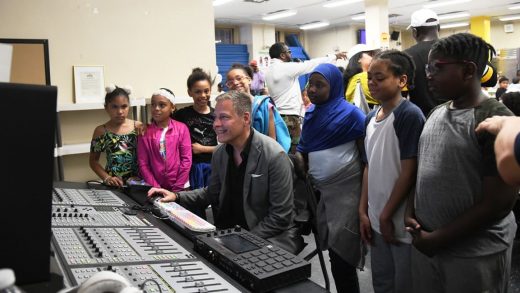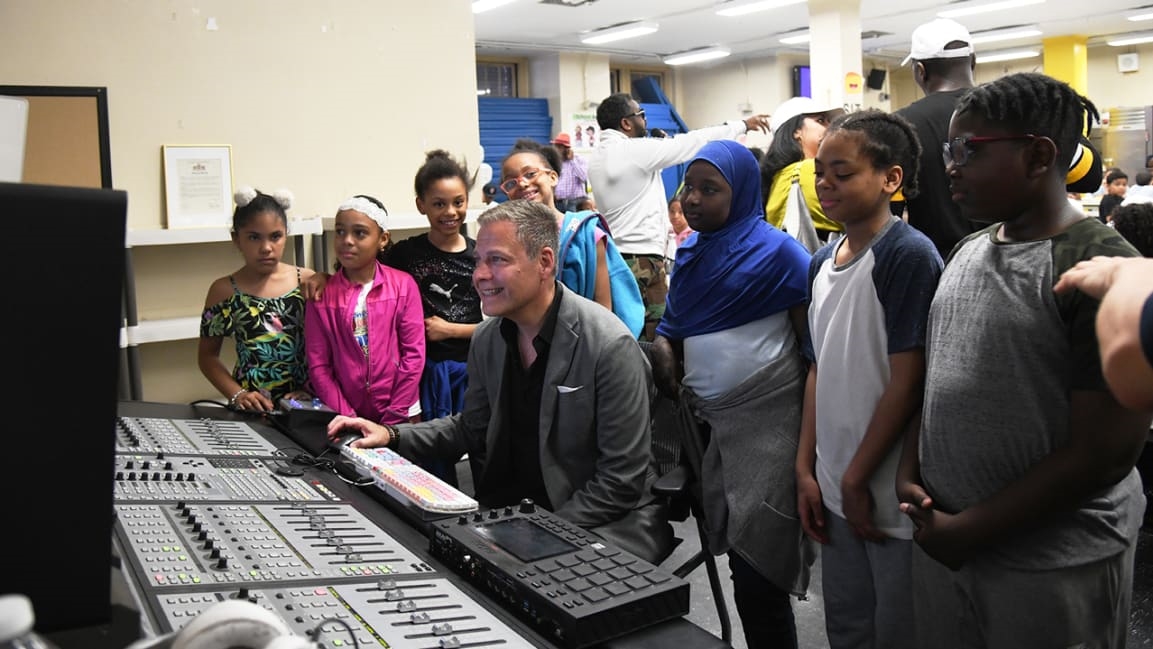How one Bronx public school is fighting for hip-hop culture and arts education
Art programs in public schools have long had the unfortunate luck of forever being in the crosshairs of budget cuts. Despite mountains of research extolling the benefits of incorporating music and art into curricula, the U.S. Department of Education’s 2020 budget proposal put “arts in eduction” on its list of programs to be eliminated, deeming that it has “limited impact.”
With rapidly dwindling funds and students at risk of falling through the cracks of the education system (not to mention the cracks of society at large), some schools are looking to brands to supplement what state and national budgets are lacking. Case in point: New York City’s P.S. 55 Benjamin Franklin.
The pre-K to fifth grade public school in the Bronx recently announced a partnership with the nonprofit hip-hop outreach Windows of Hip-Hop and luxury watchmaker Bulova to build the first-ever recording studio within a New York school, along with creating a hip-hop curriculum.
“For a long time, schools taught children about other people’s cultures—we want to teach our children about their culture,” says PS 55 principal Luis Torres. “Social studies for me was learning about slavery and things that painted our children in a negative way. So now it’s an opportunity for us to start teaching the children about their own culture, why they dress the way they dress, why they speak the way they speak, why they like to listen to rap music, why they like different things.”
The partnership came about when Torres discovered that the school’s volunteer soccer coach was also the president of a marketing agency that counted Bulova as one of its clients. The brand was already working with music legend Nile Rodgers and his We Are Family foundation, and Torres got on the list for an event where he met Bulova’s U.S. managing director Michael Benavente. Torres was already acquainted with Windows of Hip-Hop after reaching out to one of its president and CEO Melissa Libran on Instagram. As it turns out, both Bulova and Windows of Hip-Hop were trying to figure out effective ways of bringing music into schools.
The meeting of minds then turned into a major opportunity—and hopefully a larger movement—for underserved kids. “We’ve been in New York for 144 years. So the whole time we’re here, we want to connect with communities,” Benavente says. “Nobody needs a watch today. So the watch business really becomes an emotional connection, and it really becomes about community. So for schools, the kids need hope. Kids need an avenue. We’re using music as our platform to connect with people because it’s multicultural. It doesn’t matter where you were born, where you’re from. Music connects. This is just the start of something. Where it’s going to take us, we don’t know yet, but we know one place it’s going to take us is PS 55.”
Hip-hop education
The recording studio, which is being constructed in the basement of PS 55, is slated for completion in the spring of 2020. The school hosted an event earlier this month announcing its plans and giving a preview of what students can expect: Learning about music production, laying down their own tracks, and gaining a deeper understanding of hip-hop’s history—all in the neighborhood that was hip-hop’s birthplace, no less.
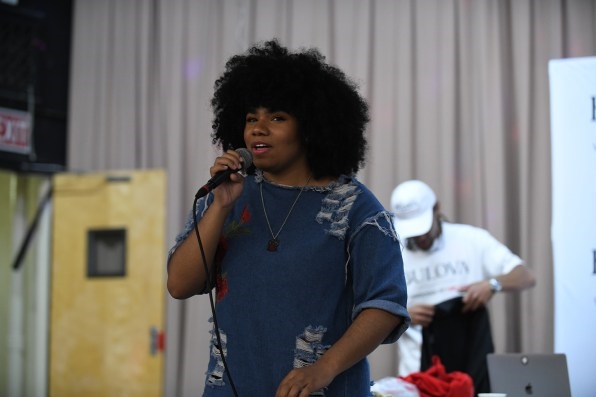
[Photo: courtesy of Windows of Hip Hop]
“It helps the kids to understand that there are other careers in hip-hop. We don’t knock our community, but many are not going to be doctors and lawyers,” Libran says. “Some may be promoters, producers—there are so many careers in hip-hop that we’re trying to highlight because at this point, the truth of the matter is that they’re too exposed to drugs and crime and gangs. Being that [the school is] around four housing projects, it’s like they don’t even get a chance.”
“I’m a kid that comes from the projects, and I didn’t really believe much in education,” adds Alberto Elkerson, a board member in Windows of Hip-Hop’s eduction division. “I can only identify with things that I was receptive to. And I was certainly receptive to music. I left school in eighth grade, but I was able to do well for myself. We’re talking about a broad curriculum. We’re talking a kid looking at that mix board or the recording studio downstairs and saying, ‘I don’t have to be an artist. I can own a record company.’”
Expanding students’ purview on potential careers is important, but the more immediate goal of this partnership is for teachers to use hip-hop as tool to enhance both scholastic and cultural education.
“What has the kids’ ears more than anything now? Hip-hop,” says Grandmaster Caz, hip-hop legend as well as a board member and ambassador for Windows of Hip-Hop. “So instead of hip-hop being a detriment to them, hip-hop should be a learning tool for them. For you to rap, you have to know vocabulary, you have to be able to read, you have to be able to write. It teaches that.”
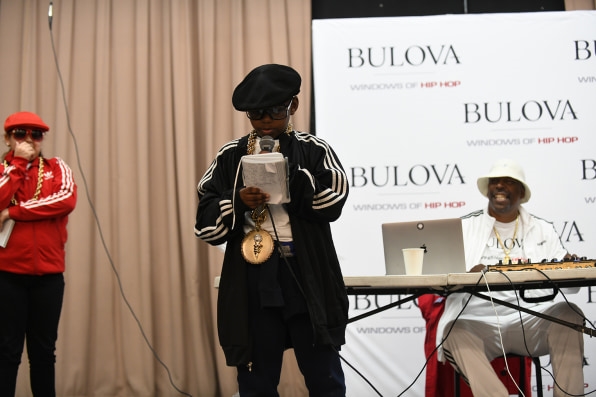
“For me as an educator that grew up on hip-hop music and seeing the way hip-hop is today, we need to get back to what it was,” adds Torres. “A lot of [the students] are exposed to the gangster stuff and all the rough stuff without a message. Where’s the message? Where’s the story? When you hear hip-hop of the past, there’s a story. Our hope is that we’re able to change some of these negative things that have come about in our communities, because people are misunderstanding the purpose of hip-hop.”
As enriching as PS 55’s program seems to be, Torres strongly believes there are systems in place rooting for the downfall of something like this. Torres has been very vocal about how schools with the strongest sports and arts programs (i.e., wealthy and predominantly white schools) control scholarships and access to specialized schools—and he’s not wrong. According to research compiled by The Hechinger Report:
Nearly 13% of students from families that make more than $106,000 a year get private scholarships, compared with about 9% of those whose families earn less than $30,000, according to data collected by the Education Department. White students also have higher odds of getting private scholarships than black or Hispanic students.
While two-thirds of parents with incomes of $75,000 or more could name scholarships as potential sources of financial aid, only 1 in 4 with incomes under $25,000 a year could, according to a survey by the Harris polling company for the loan company Sallie Mae; white parents were also more likely than black or Hispanic parents to know about them.
“It’s to the advantage of certain communities that our schools don’t have arts, because as long as our children can’t compete for those scholarships and those seats in those specialized schools, their communities will continue to benefit,” Torres says. “So while we’re sitting here talking about doing something positive and great, we have to also understand there are people sitting somewhere else talking about investing in prisons and keeping the arts out of certain schools and communities. So we have to try to get more like-minded people to start doing this investment.”
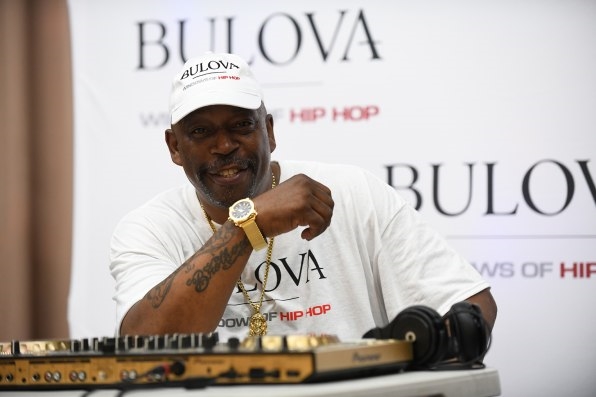
You know what time it is
It’s why a partnership with a company like Bulova is important to the overall mission of what Windows of Hip-Hop and Torres are trying to do—and one they’re hoping more brands will embrace.
“A company like Bulova that gets behind what we’re doing here just legitimize our efforts,” Grandmaster Caz says. “To outside ears, eyes, and entities, that makes us look more important. ‘Bulova’s messin’ with them? Let’s go see what’s going on.’”
Torres recently delivered a TEDx Talk where he proposed a budget of $170 million to fund arts programs, with $100,000 going to each of New York’s 1,700 public elementary schools. To pay for it, he proposed that each of New York’s 250,000 business pay annual dues of just $850. A reasonable sum but unrealistic at scale. At the heart of what Torres wants to accomplish as not just a principal but an advocate for parity in eduction, is finding brands like Bulova who are willing to step up.
“[Benavente] doesn’t have to do anything for this community of the school, but Michael has a commitment as a human being to change the lives of children that don’t have access to resources. He understands that if he doesn’t open up some of these doors for us, we’re never going to get through those doors. He has access to things that we don’t have access to,” Torres says. “Having a partner like Bulova is very important for our school, because it tells people that we have to invest in these communities, even though our investment might not have a financial return, but it will have a human return, because now we’re preparing these children to be productive citizens in this world.”
(21)

